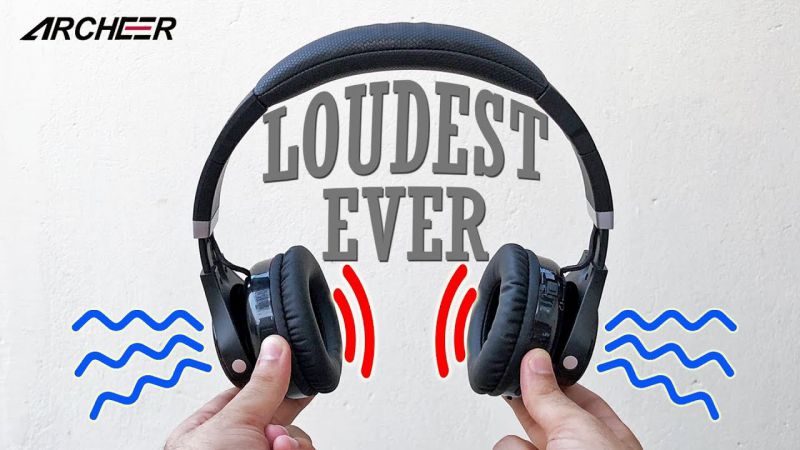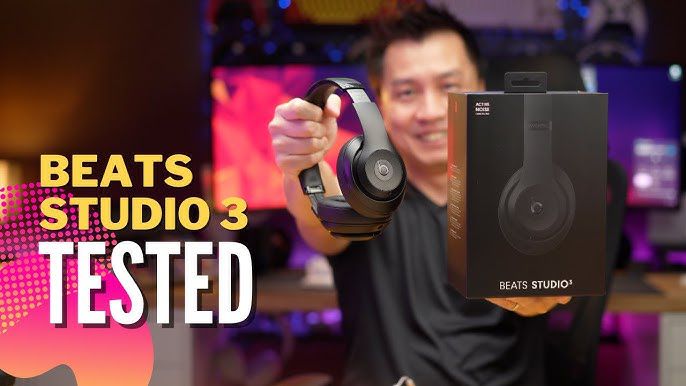As music enthusiasts, we all want to experience the full potential of our favorite tracks, and that means having headphones that can deliver high-quality sound at high volumes. This is where the importance of loudness in headphones comes into play. Whether you are a DJ, a gamer, or simply someone who enjoys listening to music at full blast, having headphones that can go the distance is essential.
In this article, we will be discussing the loudest headphones on the market today. We’ll provide a comprehensive overview of each of the top 3 loudest headphones, including their features, pros, and cons, as well as what makes them stand out in terms of sound quality and volume.
So, if you are ready to take your listening experience to the next level, let’s dive in and discover what the Loudest Headphones that the market has to offer!
Contents
Top 3 Best Loudest Headphones Reviewed:
Get ready to rock out with the loudest headphones on the market. These powerful and amazing headphones will take your listening experience to the next level.
1. Marshall Major IVHeadphones
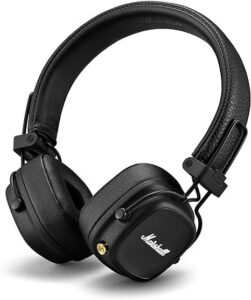
Marshall Major IV On-Ear Bluetooth Headphones are the perfect accessory for music lovers on the go. These headphones deliver a powerful sound experience with their 40mm dynamic drivers, while also offering up to 80 hours of wireless playtime on a single charge.
Their ergonomic design and soft ear cushions ensure a comfortable fit even during extended listening sessions.
- Exceptional sound quality
- Long battery life
- Comfortable fit
- Sleek design
- Limited noise cancellation
- No volume control on the headphones
2. Bose Noise Cancelling Headphones 700 – Unmatched Noise Cancellation with Great Sound
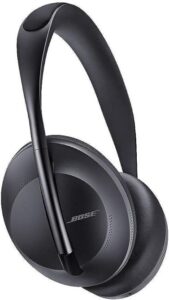
If you are looking for premium noise-canceling headphones, the Bose Noise Cancelling Headphones 700 might be just what you need. These headphones boast top-notch noise-canceling technology, a sleek design, and impressive sound quality. Let’s delve deeper into the pros and cons of these headphones.
- Unbeatable noise-cancellation
- Exceptional sound quality
- Comfortable fit
- Expensive price point
- Short battery life
- Limited sound customization
3. Skullcandy Cassette Wireless Over-Ear Headphones
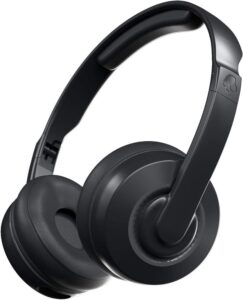
Skullcandy has always been a trusted brand in the world of audio products, and the Cassette Wireless Over-Ear Headphones are no exception. These headphones offer an impressive combination of high-quality sound and convenient features, making them an excellent choice for music enthusiasts on the go.
- The Skullcandy Cassette Wireless Over-Ear Headphones offer a comfortable fit that’s perfect for extended listening sessions.
- The headphone’s custom-tuned 40mm drivers produce a clear, powerful sound that’s great for all types of music.
- The headphone’s lightweight and foldable design makes them easy to carry with you wherever you go.
- The headphone’s battery life could be better, as they only last for around 22 hours on a single charge.
- The headphones may not fit comfortably on all head sizes and shapes, which can be a drawback for some users.
Superior Sound Quality
The Cassette Wireless Over-Ear Headphones deliver rich, powerful sound that makes you feel like you are in the front row of a live concert. The headphones feature custom-tuned 40mm drivers that produce an accurate and balanced sound signature, making them perfect for a variety of genres.
Additionally, the headphones’ passive noise isolation technology helps block out unwanted background noise, allowing you to focus on your music.
Convenient Features
The Cassette Wireless Over-Ear Headphones offer several features that make them incredibly convenient to use. For instance, the headphones have a built-in microphone that lets you take calls hands-free.
The on-ear controls allow you to adjust the volume, skip tracks, and take calls with ease. Moreover, these headphones are lightweight and foldable, making them easy to pack and carry with you wherever you go
Understanding Decibels: What They Are, How They Affect Loudness
When it comes to understanding sound and volume, decibels (dB) are the standard unit of measurement. But what exactly are decibels, and how do they relate to loudness? In this article, we’ll break down the basics of decibels and provide important information about safe listening levels for headphones.
The Relationship Between Decibels and Loudness
While decibels are used to measure the intensity of sound, they do not directly correlate with how loud a sound is perceived by the human ear. The loudness of a sound is influenced by a variety of factors, including the frequency (or pitch) of the sound, the duration of the sound, and the individual’s hearing ability.
However, there are some general guidelines that can help us understand the relationship between decibels and loudness. For example, a sound at 60 dB is typically perceived as being about twice as loud as a sound at 50 dB. Similarly, a sound at 70 dB is typically perceived as being about four times as loud as a sound at 50 dB.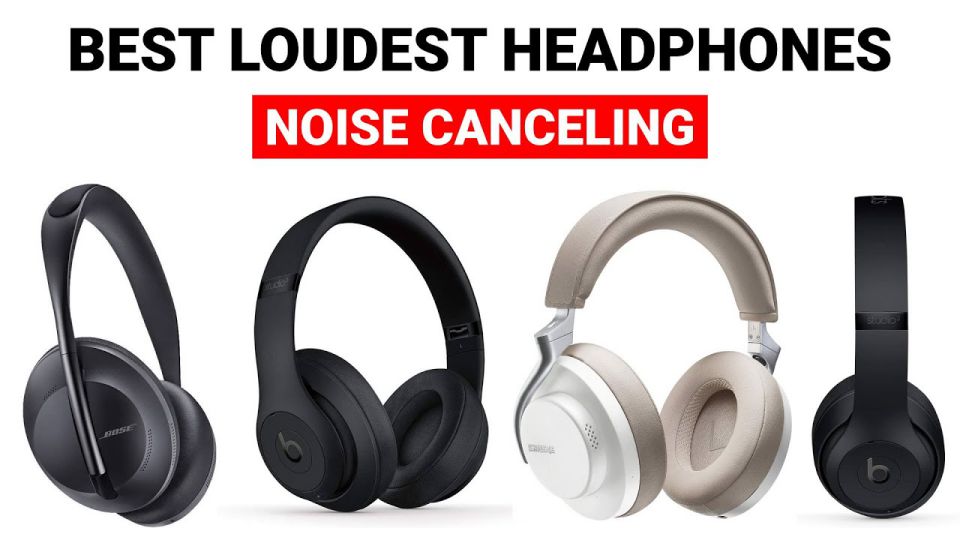
Safe Listening Levels for Headphones
When it comes to headphones, it’s important to be mindful of the volume levels you are listening at.The World Health Organization (WHO) recommends a maximum volume level of 85 dB for no more than 8 hours per day. However, many experts suggest that even lower volume levels may be advisable for extended listening sessions. Here are a few tips for safe listening with headphones:
- Keep the volume at 60% or less of the maximum volume level.
- Take breaks every hour to give your ears a rest.
- Use noise-canceling headphones to reduce the need for higher volume levels in noisy environments.
- Consider using apps or tools that monitor and regulate the volume levels of your device.
Moreover, decibels are an important unit of measurement for understanding sound and volume. While they don’t directly correspond to loudness, they can help us understand the intensity of sounds. When it comes to headphones, it’s important to be mindful of the volume levels you are listening at to protect your hearing over the longterm.
What Are The Factors Affecting Headphone Loudness?
When it comes to choosing the perfect headphones, it’s important to understand the factors that affect headphone loudness. In this article, we’ll be exploring three key factors: impedance, sensitivity, and frequency response.
Sensitivity: How Efficient the Headphone is
Sensitivity is a measure of how efficiently the headphone converts electrical signals into sound. A high-sensitivity headphone requires less power to produce sound and tends to be louder than a low-sensitivity headphone. However, it’s important to note that sensitivity is not the only factor that affects headphone loudness. Impedance and frequency response also play a role.
Frequency Response: The Range of Frequencies the Headphone can Reproduce
Frequency response refers to the range of frequencies that the headphone can reproduce. A headphone with a wide frequency response can reproduce a broader range of sound, which can result in a more detailed and dynamic sound.
However, a headphone with a narrow frequency response may not be able to reproduce certain frequencies, which can result in a less detailed sound.
Related Posts:
- Tips To Wear Bone Conduction Headphones / Earphones
- What Headphones Does Markiplier Use [Kind of VR or Not]
- Are Beats Studio 3 Sweat Resistant
Frequently Asked Questions
Q: What are the loudest headphones available on the market?
Ans: The Skullcandy Cassette and the Marshall Major IV On-Ear Bluetooth Headphones are two of the loudest headphones available, with a maximum sound pressure level of 103 decibels and 125 decibels, respectively.
Q: Can noise-canceling headphones be louder than regular headphones?
Ans: Yes, noise-canceling headphones can sound louder than regular headphones because they actively cancel out external noise, allowing you to hear your music more clearly at a lower volume.
Closing Thoughts
When it comes to finding the loudest headphones on the market, it is important to consider your needs and listening habits. While some headphones may boast high maximum sound pressure levels, listening at maximum volume can be dangerous for your hearing.
It is recommended to listen to headphones at a safe and comfortable volume level. Additionally, noise-canceling headphones can provide a louder and more immersive listening experience at a lower volume by canceling out external noise.
Ultimately, it is important to prioritize the quality of sound and the safety of your hearing when choosing headphones, rather than solely focusing on maximum volume levels. By doing so, you can enjoy your music or audio content to the fullest while protecting your hearing for years to come.

